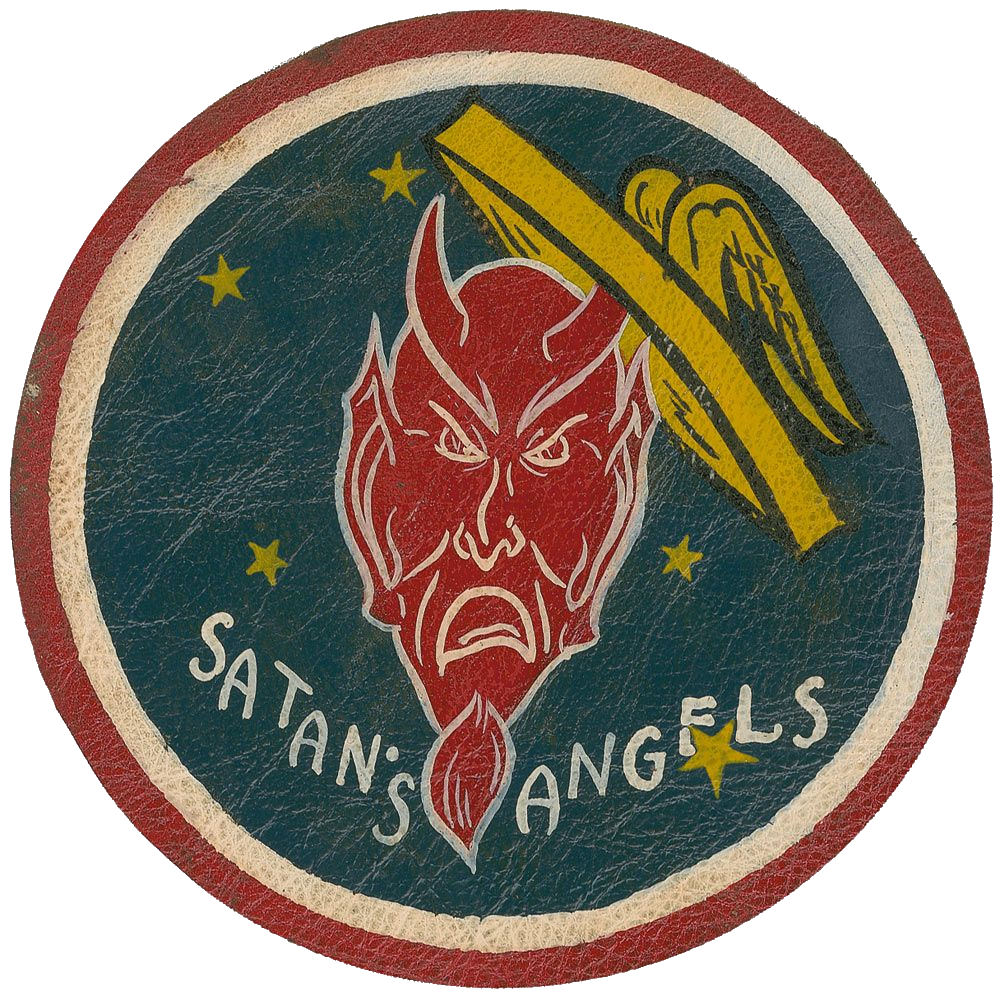-
Posts
1933 -
Joined
-
Last visited
-
Days Won
1
About =475FG= Dawger
- Birthday 09/30/1967
Personal Information
-
Flight Simulators
DCS
-
Location
United States
-
Interests
None
Recent Profile Visitors
The recent visitors block is disabled and is not being shown to other users.
-

Overhead Break: Are We (Once Again) Doing it Wrong?
=475FG= Dawger replied to graveyard4DCS's topic in Chit-Chat
Excellent thread. Real F-15 pilots had to be limited to 4 G’s while pretend fighter pilots are treating the overhead as an instrument maneuver. You can’t die so every overhead should be as fast as possible at the break, as low as possible at the break and looking through a black tunnel in the break. People mistakenly believe the training examples they see are regulatory in nature, not to be deviated from. They are just a baseline example to get a neophyte in the ballpark.- 6 replies
-
- 1
-

-
- overhead break
- overhead pattern
-
(and 1 more)
Tagged with:
-
=475FG= Dawger started following Constantly Trimming Rudder Tabs? , When will the power issue be complete? , Maneuvering On The Ground With Differential Braking and 2 others
-
Not entirely correct. GT is quite correct when he says higher speed will be obtained for a given amount of power at a lower propeller RPM. However, lowering RPM at high manifold pressure increases the torque. A while back I posted a simplified explanation in the P-51 forum So manufacturer's are going to err on the side of not over boosting the engine and give the pilot numbers that avoid damaging the engine. I got a personal demonstration of this over three decades ago. I went missed approach on a localizer approach in south Arkansas in a Beech 18 (twin Pratt and Whitney Wasp, Jr's). About 200 feet above the ground on the straight ahead missed approach procedure I entered the moderate downdraft of a heavy rain shower. I applied "radar power" as we used to say to avoid settling into the ground. The engines were over boosted for probably 30-45 seconds until I cleared the downdraft and started climbing again. About 100 hours later, one of the jugs on the left engine separated, head from cylinder barrel, breaking the oil lines between the jugs. It took about 15 minutes to pump the 8 gallons of oil out, forcing a low oil pressure engine shutdown. I landed at my planned destination off the same localizer approach with 300 ft overcast and rain showers. If the rubber oil lines had been less ancient, they probably would have stayed intact and avoided the need for a very exciting single engine approach. A lot to take away from that experience with regard to how piston engines are modeled in DCS, especially radials. The damn things can take some severe abuse and get you back home.
-

Maneuvering On The Ground With Differential Braking
=475FG= Dawger replied to AG-51_Razor's topic in Bugs and Problems
Having taught in and received training in a wide variety of very expensive full motion simulators that are faithful enough to the real aircraft that you can step out of the simulator fully qualified to fly revenue passengers, I can tell you that NONE have ground handling that 'feels' right. It just isn't an area that can be simulated very successfully. Friction is a bitch. -
This is what I am referring to. There is essentially no torque in some DCS warbirds above stall speed. You can go throttle stop to stop without touching the controls at any speed above stall speed. There are plenty of stories about the Mustang and Corsair as well as all the other high HP WWII single engine aircraft. The P-38 was designed to have counter-rotating props to avoid the issue all together and it was well known that the 109 would torque roll off trying to climb with the P-38. In DCS, the Mustang shows almost nothing when throttle is slammed stop to stop under the conditions described to demonstrate the powerful torque roll. The Spitfire is a bit more sporty and the 109 demonstrates the most torque of them but it certainly never loses rudder authority at full power at any speed . The Corsair looks pretty milquetoast in the above video. This doesn't make the airplane 'easy' or 'hard'. If you know that your throttle hand is connected to your right foot and right hand, you will not have any problems, especially if you apply throttle slowly. However, rapid application of throttle below 120 knots in anything with 2000+ hp without simultaneous control inputs should result in something very exciting happening. We aren't seeing anything like that. DCS is supposed to make the FM realistic, but they have failed in this area. And the customer seem to encourage this error for an unknown reason. Engine torque is always present. At a given MP/RPM combination, torque is a CONSTANT. What changes is the available force to counter it via airspeed over the flight controls. We don't see that in DCS. We see hard snap rolls to the left at stall speed and torque is magically erased or reduced to negligible levels once above stall speed. NOTE: When I say 'torque" I mean all the forces that contribute to aircraft rotation and yaw opposite to the rotation of the propeller.
-
I haven’t flown the DCS Corsair but I own and have flown all the others. None of them are anywhere near “realistic”. Every DCS Warbird has been dumbed down for the ‘sim’ community to some degree. It is a simple fact that any single engine prop aircraft requires changing control input with every power and/or speed change. It’s not easy or hard. It just is. DCS Warbirds are disappointing in this regard as it removes much of what made those aircraft challenging to fight in and sometimes deadly to inexperienced (and experienced) crew. Hopefully, Magnitude breaks away from this paradigm and creates a faithful model of the Corsair. I hope the latest FM changes are not bowing to pressure from those who believe engine torque only exists at or below stall speed.
-
Disappointing. I am glad I didn't get excited and setup my flying rig and take the plunge.
-
It depends on the module.
-
You probably want to compare the rate of control surface deflection to see if there is a difference. At 300 knots for example. Move the stick back as rapidly possible and observe if there is a rate of deflection difference.
-

Keep missing the base leg approach to Final
=475FG= Dawger replied to rocky's topic in Guides & Tutorials
That is absolutely true and probably the greatest limit to simulation. -
Its both. Many moons ago, I flew the Emb-120. Un-boosted controls. At speed, the control column felt like it was set in concrete. When maneuvering, there was no discernable control movement in the pitch axis, just varying amounts of pressure, yet you could maneuver the aircraft reasonably well for an airliner. The Lear 60 (also un-boosted) required 80 lbs of force during stall recovery to keep the nose up. I had a F-15C pilot training in the 60 and he wanted to try head on lead turn on a traffic target. He blew the pass because he wasn't expecting the huge control force required to generate G at speed. So "light" controls is going to have a different meaning in an un-boosted aircraft. Not requiring both hands to move the stick would be light controls at 300 knots. Many boosted jets artificially increase required control forces to prevent the pilot from over controlling because a little control movement goes a long way. Most airplanes are going to require a fist or less aft stick movement to get to maximum G. The Corsair videos above demonstrate this quite clearly. He clearly isn't moving the stick much in pitch and not requiring much force to do it. Also, a note on rudder movement. If you watch the 'legs' video, that pilot is dancing on the rudders, especially during takeoff. You aren't seeing big movement once the speed builds because the rudder is more effective and he is correcting extremely rapidly, needing only slight changes of pressure to achieve the desired result. If you watch carefully you can see the amount of rudder required at slow speed, high power versus high speed, high power by right leg extension.
-

Keep missing the base leg approach to Final
=475FG= Dawger replied to rocky's topic in Guides & Tutorials
Steady turn rates are not a goal in the traffic pattern, even in an airliner. Your aim is a constant radius, thus the rate is going to vary. In the overhead pattern, your turn from downwind to final is a continuous, descending, decelerating turn, ideally rolling wings level a split second from touchdown That cannot be done with a constant turn rate. -
In you original post you said this happens when you apply back elevator. You say you are flying at 180 knots. Stall speed at 1 G is 77 kts. The aircraft will stall at 180 kts at about 5.4 G. The stall buffet will precede that. However, you say it isn't buffet so I would suggest posting a track or a video( with controls indicator visible). Most likely its PIO.
-
Y'all are tempting me to set up my flying gear again and try the Corsair. If there were any prospect of other Warbirds being modeled in this fashion, I would do it. Maybe in a decade or two, if I am still alive and sentient.
-
Most straight wing aircraft experience pre-stall buffeting, especially at greater than 1 G.
-
In the real world, constant trim is the reality. However, unless you are going to be steady state for a bit, its better to just hold the control pressure instead of adjusting trim during maneuvering flight. The only exception is the elevator axis, as the control forces can vary greatly and sometimes you will need to trim during maneuvering flight. So, hold the rudder pressure required unless you are in steady state climb, cruise or descent. It sounds like the Corsair is actually moving away from the "flies like a jet" Warbird standard we have endured for decades.




.thumb.jpg.8541ccc384bb844008c074ec85d03065.jpg)
